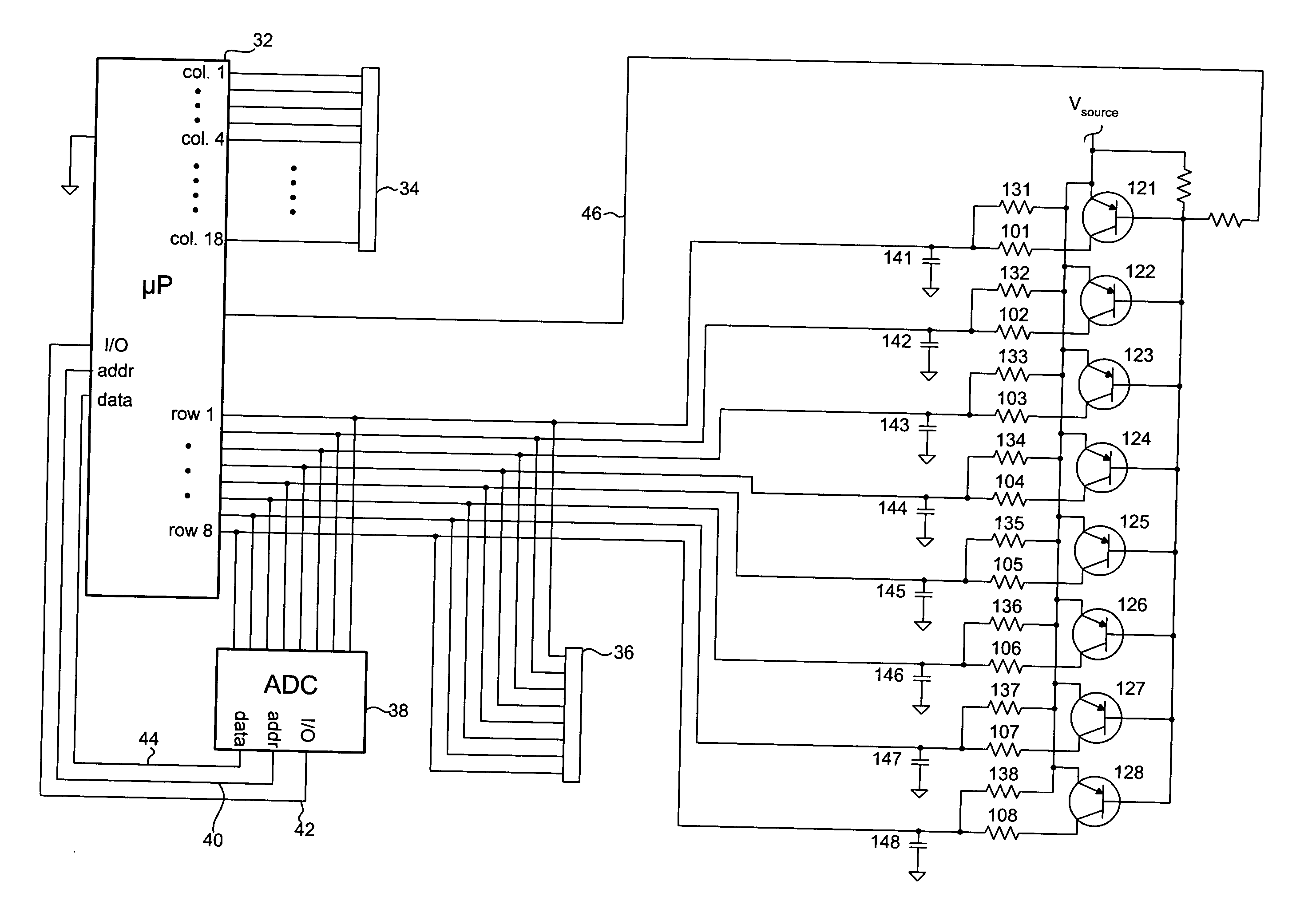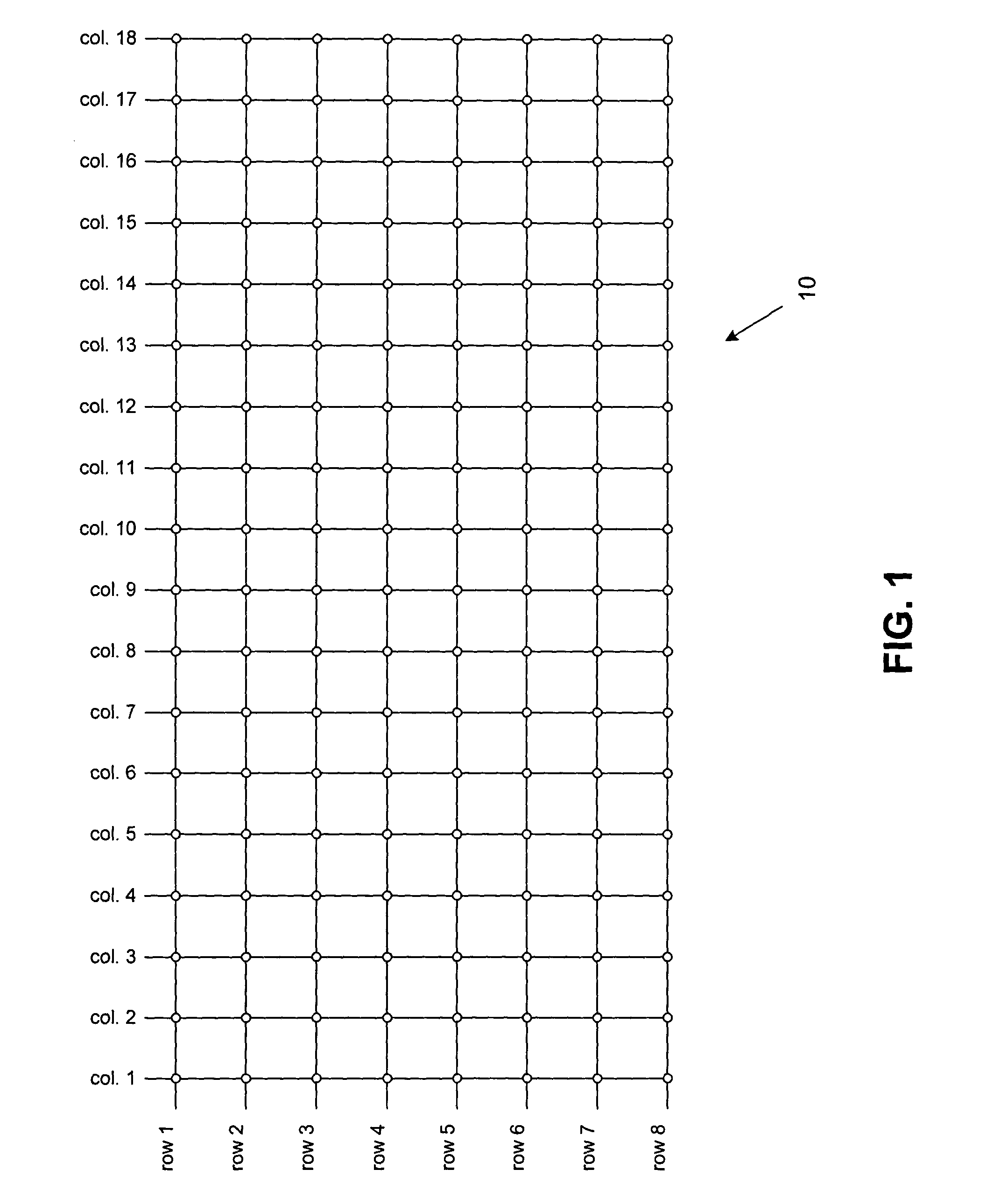Computer keyboard with quantitatively force-sensing keys
a keyboard and quantitative technology, applied in the field of computer keyboards, can solve the problems of difficult to reach keys, limited number of keys that can be added, and users may have difficulty remembering the purpose of all keys
- Summary
- Abstract
- Description
- Claims
- Application Information
AI Technical Summary
Benefits of technology
Problems solved by technology
Method used
Image
Examples
second embodiment
As shown in FIG. 10, a keyboard according to the invention also includes a grid 70 of row and column conductors. Grid 70 is supported by a frame 76. Placed over each row / column intersection of grid 70 is a dome switch 71 (only one dome switch shown) and a key 72. Dome switch 70 could be, e.g., similar to switch 26 (FIG. 2) or switch 26′ (FIG. 2A). Grid 70, frame 76 switches 71 and keys 72 form keyboard subassembly 73. When a user presses one of keys 72, the dome of the key's dome switch 71 causes an electrical connection to be formed between the row and column conductors over whose intersection the key and switch are positioned. Unlike grid 10 of FIG. 1, the row / column intersections of grid 70 do not include a FSR. Existing dome switches used in conventional keyboards can be employed.
Instead of detecting key force by measuring force at the level of the individual keys, the force upon a pressed key is determined by force sensors 74 supporting keyboard subassembly 73 on keyboard base...
first embodiment
Similar to the first embodiment, microprocessor 232 scans for a key press by selecting a row pin, grounding a column pin, testing the selected row pin for a low voltage, and then ungrounding the column pin and moving to the next column pin. After all column pins for a selected row pin have been tested, the next row pin is selected, and the process continues. Upon detecting a low voltage on a row pin, microprocessor 232 grounds pin 233. Force sensors 74 are only connected to ground when a key press is detected so as to avoid excessive power consumption by force sensors 74. Microprocessor 232 then sequentially addresses each force sensor 74 (via address line 240), sends a read signal via I / O clock line 242, and receives digital values for a voltage from each force sensor 74 via data line 244. The read values are then used as a force value for the pressed key. In other embodiments, the FSR 216 of one or more force sensors 74 could be coupled to an op amp instead of being used to form a...
PUM
 Login to View More
Login to View More Abstract
Description
Claims
Application Information
 Login to View More
Login to View More - R&D
- Intellectual Property
- Life Sciences
- Materials
- Tech Scout
- Unparalleled Data Quality
- Higher Quality Content
- 60% Fewer Hallucinations
Browse by: Latest US Patents, China's latest patents, Technical Efficacy Thesaurus, Application Domain, Technology Topic, Popular Technical Reports.
© 2025 PatSnap. All rights reserved.Legal|Privacy policy|Modern Slavery Act Transparency Statement|Sitemap|About US| Contact US: help@patsnap.com



